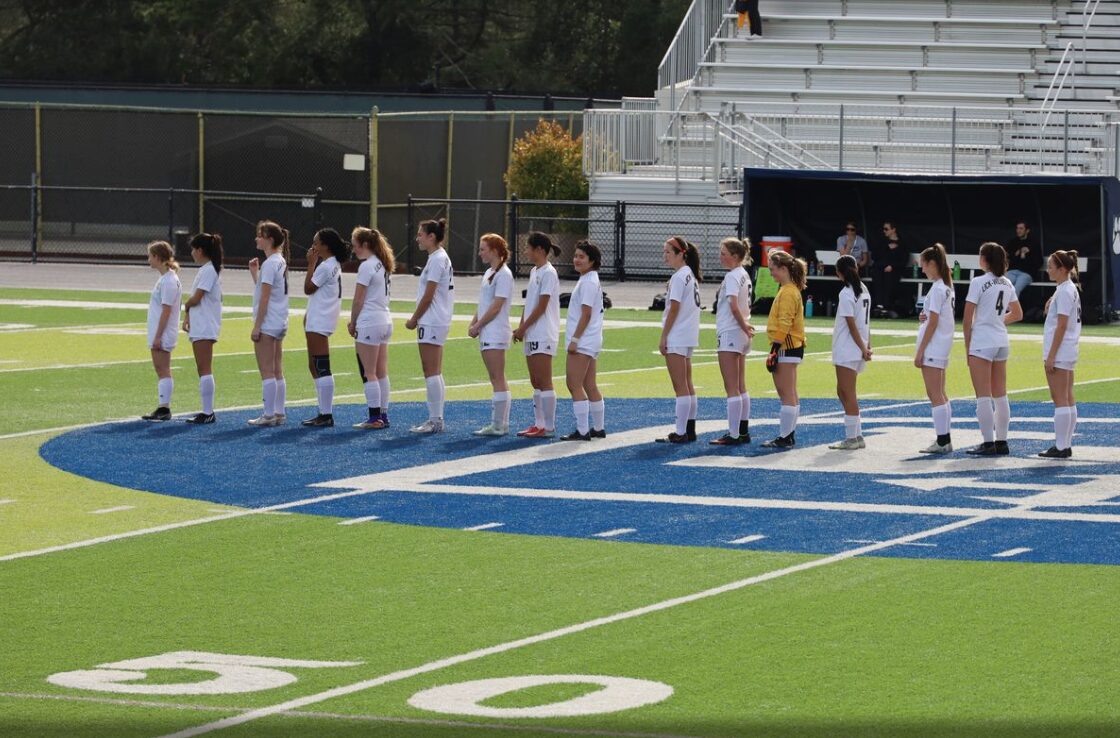From jerseys and coaches to equipment and transit, whispers of complaints continue to fill Lick-Wilmerding High School’s halls as female athletes commit themselves to their sports, despite perceiving a lack of reciprocation from their school.
In 2017, The Paper Tiger published an article entitled “Striving for Equity Within Lick’s Athletic Department” which depicted the discrepancies and disparities between the boys’ and girls’ sports programs. Predominantly narrated by interviews with student-athletes, the article highlights the experience of female athletes in the LWHS community.
Following the publishing, a list of demands was formed by athletes from almost every program asking for more female coaching staff, transparency between the Athletic Department and athletes, better equipment for girl’s sports teams and anti-sexual harassment and consent training.
In just six years, LWHS has implemented a comprehensive coaching education program in addition to the three different programs that have received female coaches. However, there is still much room to grow. The reporting and demands in the article served as a call to action for future years, so six years later, in the 2023-2024 school year, what has changed and what has not? What is the continued fight of female athletes in the LWHS community?
On June 23, 1972, women’s sports exponentially became more equitable when former president Richard Nixon instated Title IX. According to the Department of Education, Title IX states: No person in the United States shall, on the basis of sex, be excluded from participation in, be denied the benefits of, or be subjected to discrimination under any education program or activity receiving Federal financial assistance.
Title IX does not include financial, verbal, physical or emotional discrepancies between genders in any institution receiving federal financial assistance. The law was meant to assist in closing the gap between boy’s and girl’s sports across the country, and it has, especially pertaining to the treatment of collegiate athletes and the payout of large sports events like the World Cup.
Yet, many institutions are exempt from this law, including LWHS. LWHS is a private institution that receives no state funding, it has no legal obligation to ensure fairness in the athletic department. So how does LWHS try to stay equitable? Eliot Smith, the longtime Athletic Director has some answers.
“I think the biggest difference is in society. The boys get all the attention, the crowds, everything. But in our Athletic Department, if you were to look at the budget and you were to look at the uniforms, everybody has to be the same.” Smith believes the athletic department has come a long way since he first arrived.
Despite the school’s best efforts, athletes have still noticed the disparate conditions between the girls’ and boys’ athletic programs.
The undoubtable success of girls’ sports at LWHS is evident in the overwhelming tens of black and gold banners lined up on the gym walls, from basketball 2021-2022 NCS champions, to 2022-2023 cross-country BCL champions. It is also expressed in the spirited players who devote their afternoons and evenings to representing the bold hyphenated name spread across their jerseys. Despite this, many players have voiced their concern about the quality and equity of their jerseys.
“Last year I was forced to play in a huge jersey that went down to almost my knees, and it was very difficult for me to play in. I had to tie it behind me in a ponytail. I asked about finding a smaller jersey, but there was only one fitting jersey between the two teams and the JV keeper was using it.” Ella Spero ’24, girls’ varsity soccer captain and starting goalie said. Spero also notes the current JV goalie continues to use the large jersey.
Like Spero, many soccer team members are frustrated by the lack of thought surrounding girl’s uniforms. The team has an all-white uniform, meaning that players have had to invest in Spandex in order to prevent menstrual bleeding through, making it difficult for the players to focus solely on playing the game.
Havana Alcantar ’24 is no stranger to the Athletic Department and has experienced both boys’ and girls’ sports, playing on the baseball and girls’ basketball teams. “Last year [girls’ basketball] made it pretty far, but it wasn’t really advertised… But the boys’ team, everybody talks about it. I just want outreach of getting people to the girls’ games, or acknowledging that the girls went pretty far,” they said, referring to the postseason BCL success of the program. Alcantar believes the lack of advertising and media attention is the largest disparity between the programs; many other athletes have voiced similar concerns.
Furthermore, transit and fielding have also been a concern of female athletes. In 2022, the Athletic Department estimated they spent $25,000 for the baseball buses to go to Skyline College, while the girls’ softball team walked down the street to practice at Balboa Park. Balboa is a city owned grass field, while Skyline is privately owned and turf. Smith also recognizes the continued discrepancies between the programs. “If I was a softball player, I would see [the field difference] too. It’s like ‘okay, how about I go use the turf at the city college football field instead?’”
Many female athletes have voiced issues beyond field quality and transit and have complained about the equipment disparities as well. The girls’ soccer team has complained about the number of balls and field space they receive every practice. “[The boys] get the new pennies, and the new balls,” Sophia Amanquah ’25 said. “The boys have two ball bags and the girls have three balls.”
Moving forward, Smith has plans to continue to make the two programs more equitable. In addition to Personal Growth Mondays, a curriculum dedicated to improving the mental health and experience of all student-athletes, he also voiced his plan for the new Athletic Department hire. “We’re hiring a female athletic assistant here. We have to have both female and male representation in the Athletic Department.”
As LWHS begins a new season of sports, female athletes look to improve the future of girls’ sports and ask to be treated with the same funding, attention and respect as the boys’ program. What will change? What will remain the same? And in six more years, will any progress have been made?








Promotion from our partner https://vipeth.site when you enter promo code: NEWUSER24 you get 2024 USDC on your balance to start trading dont miss this opportunity.
The Brand New Technology For Those Who Want To Be Incredibly Rich https://vipreg.pages.dev